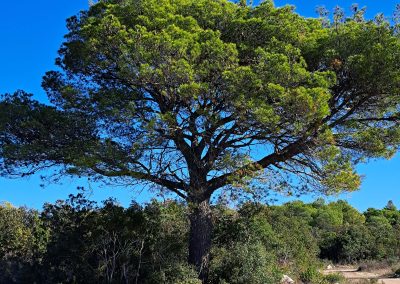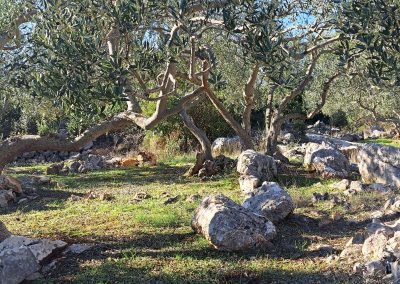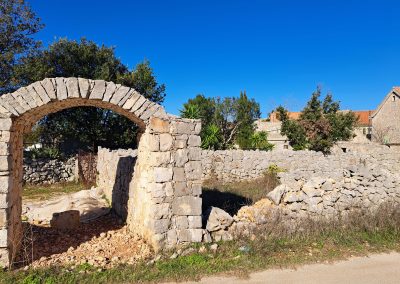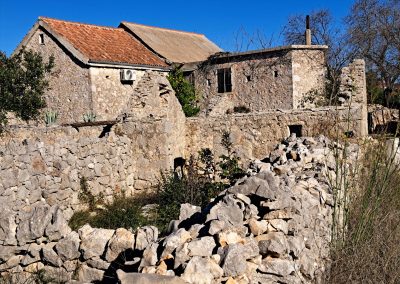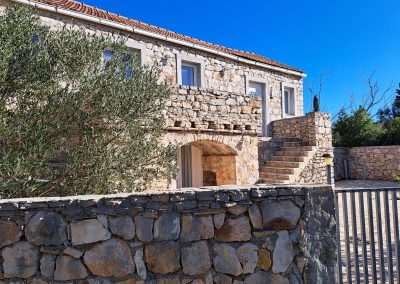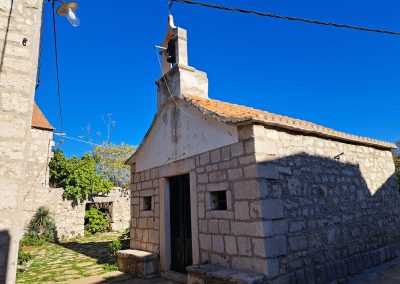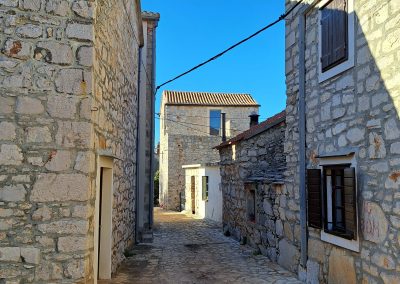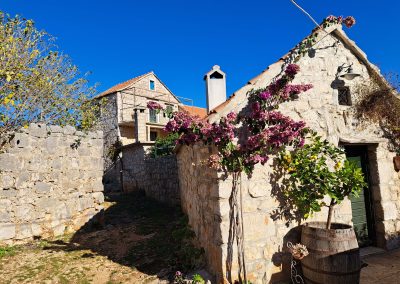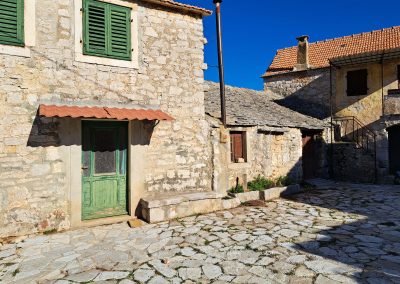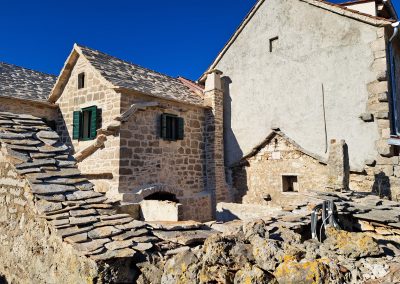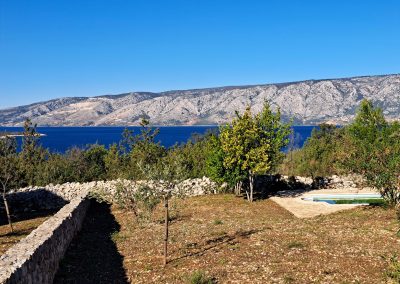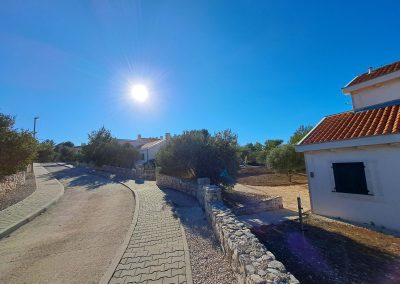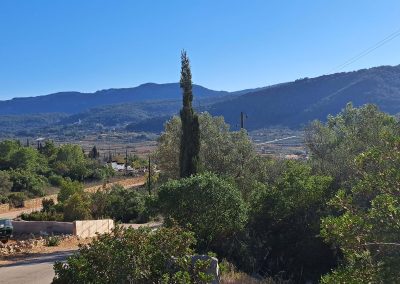Vrbanj, island of Hvar
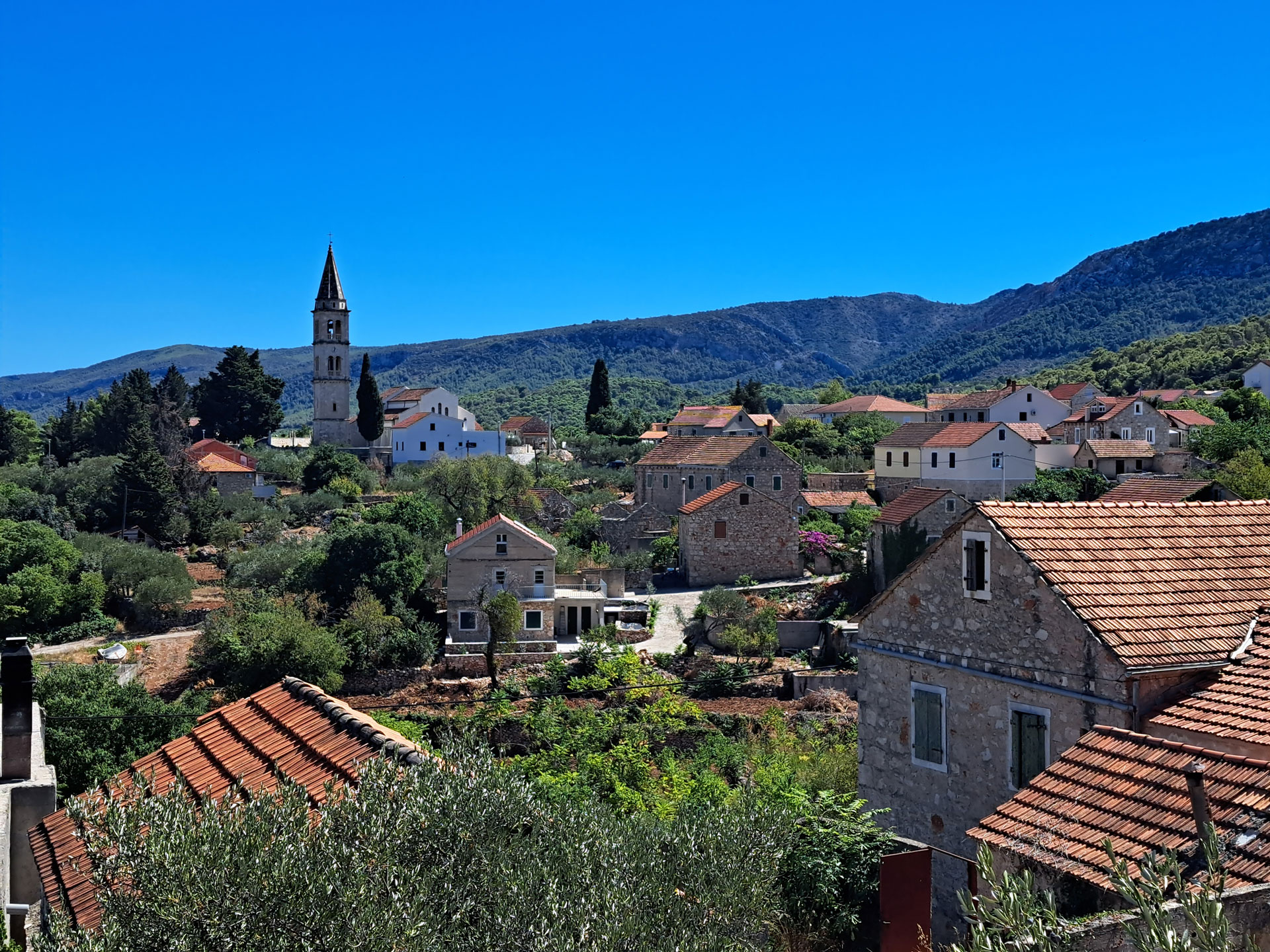
Vrbanj and its history
The earliest mention of Vrbanj under the name “Varbonj” dates back to 1331.
At the location of Hum above the village, there is a stone mound, likely a prehistoric structure, next to which are the remains of the pre-Romanesque church of St. Vitus.
In the area of the village itself, Roman remains have been found. The plateau among the hills in the central part of Hvar is clearly an interesting natural constellation for human habitation.
With 1400 inhabitants in 1900, the not-so-large plain among the hills created the largest inland settlement on the island of Hvar. Today, Vrbanj is home to about 400 residents.
From the edge of the village on the northern side, there is a view of Stari Grad Plain, while on the southern side begins the gradual ascent to the highest peak of Hvar, St. Nicholas, at 626 meters.
In the 15th century, the inhabitants of Vrbanj founded the village of Vrboska on the coast, 4 km away, and began engaging in shipbuilding. In 1475, also in the 15th century, Vrbanj got its own parish priest, the first local parish priest on the island of Hvar.
The always interesting places with the parish church of the Holy Spirit somehow free consciousness from the constraints of concrete forms, fixations, and fears, bringing from the depths of the Spirit a libertarian openness to the vastness of the world “arranged” as a hierarchical condition. The respect of the “Great” by the “Small” and vice versa consists of assessing the ratio of endurance and arrogance on both sides. Be that as it may, from 1510 to 1514, there was a peasant revolt led by Matija Ivanić, a nobleman born in Vrbanj, which spread across the entire island of Hvar. A memorial park was created in the center of Vrbanj to commemorate this event, which required the arrival of Venetian war galleys to reestablish hierarchical “hypnosis.” During these events, the Holy Cross of the parish church in the town of Hvar also bled. In January 1943, Italian fascists burned Vrbanj and devastated its infrastructure as they joyfully departed from history.
Spirit, wit, and spirituality are particularly significant in art, making Vrbanj the birthplace of two exceptionally talented artists, Jakov Bratanić, who very early on, in a highly lyrical manner, turned towards Art Brut painting-artistic aesthetics, and singer-songwriter Zlatan Stipišić Gibonni. Today, Vrbanj is inhabited and visited by a variety of artists and eccentrics alongside the usual tourist tours.
